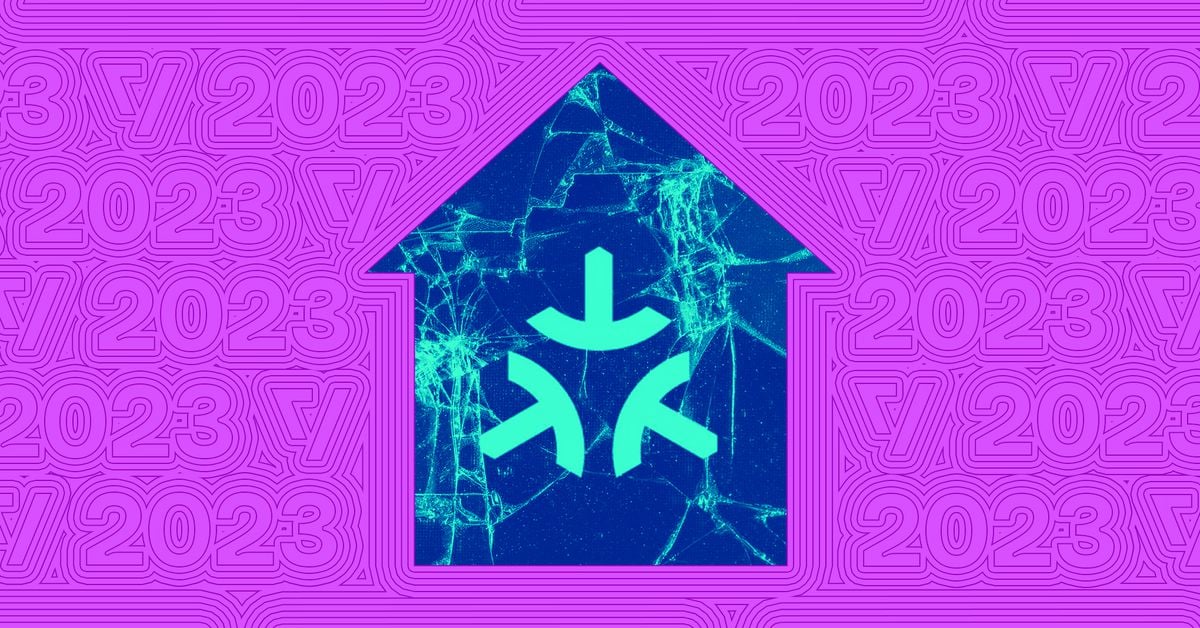Pretty weird that such a long article doesn’t even mention Home Assistant once.
I understand that it’s not the easiest to set up for the average person, but given how much pain all these online services and different hubs have caused the author, it’s weird that it doesn’t even get a shout-out.
IMO it’s precisely because it’s complicated and the opposite of the goals of Matter.
People in tech bubbles like HA. Normal people wouldn’t want anything to do with it.
And in some ways, HA pacifies tech enthusiasts. Leaving a messy fragmented landscape of devices for normal people.
HA seems to be trying to build the pyramid bottom up, rather than top down.
Currently they have basically integrated everything they can. They have also grown to the point where new integrations get added quickly and effectively.
Their recent aim seems to have been simplification. YAML, while still available, have been pushed out of the learning requirements. There are now more and more GUIs and assistance.
The next step looks to be simplifying this further. At this point, they are approaching the simplicity other products try and start from. The “year of the voice” and the natural language processing that entails are an excellent launch point for this.
In short, they have built an excellent foundation layer. They have now added interfaces with a learning curve shallower than a brick wall. Next they seem to be aiming to add simplified interfaces for Joe public to understand. You’ll still be able to drill down for complex tasks, but that will be a choice, not a requirement.
To me this seems the best way to build a winning solution. The top down approaches seem prone to lock in, or limited capabilities.
My smart home is Homekit + Homebridge based and I don’t have that much smart devices so I’m not super up to date. The way I understand this, Matter is supposed to make Homebridge unnecessary and after many delays it finally happened to some degree, hence inclusion in “year in review” type of article. I know of Home Assistant but did it get any big updates this year?
The thing that articles often miss is that HomeAssistant isn’t designed to be another protocol, it’s more like one UI wrapping up all the other protocols.
You buy different bits of kit, and so long as they’re not made my a shitty manufacturer that locks everything down, homeassistant will likely work with them all once people have had time to add support.HomeAssistant
it’s more like one UI wrapping up all the other protocols.
You buy different bits of kit […] homeassistant will likely work with them
A pretty good explanation!
did it get any big updates this year?
This year was officially called ‘Year of the voice’, so that was the main focuse, but pretty much every monthly update comes with all sorts of neat enhancements, including plenty of improvements to the Matter/Threads integration.
Matter feels a little bit doomed.
Manufacturers want to lock people into their systems.
Enthusiastic techies want devices to support the standards that are already working, and often to avoid IP where possible.
General consumers just want the device to do the thing, and will happily use the manufacturer’s lock app.Matter sits in the middle, and somehow misses both camps.
The techies don’t like it, because it’s adding yet another standard to adhere to/break.
And the general consumers won’t even notice, they’ll just use the app the manufacturer suggests on the box.I also don’t like Matter because it removes a barrier that provides security benefits. As things stand currently if you’re using Zigbee or Zwave for smart device connectivity then your hub acts like a firewall and segregates IP traffic from IoT traffic. One of the major features, arguably the feature of Matter is that it acts as a transparent bridge between IoT devices and traditional IP networks like Ethernet and Wifi. Right now the attack surface of my IoT devices is limited to the attack surface of Home Assistant. With Matter every single IoT device is now exposed on the LAN massively increasing the possible attack surface.
I think it will be okay for smaller manufacturers, right now they have to spend resources on supporting multiple major smart home platforms so Matter will make their lives a bit easier.
Matter makes sense on paper but it’s not really doing anything more than a standardized interface for MQTT traffic could do and damn Google has a way of fucking up simple stuff. Take a look at their repo for matter. Monolith of submodules and a goofy recursive project structure that requires multiple python virtual environments and external tools to build – to the point where they have another repo just to distribute binaries of the build tools last known to work.
It’s completely unnecessary and impossible to integrate cleanly into any existing system.
I can say my Hue lights from long before Matter fulfill this promise with the firmware-upgraded bridge I got like 7 years ago. I hate that the brand is so expensive but they got it right the first time.
I’ve had the pleasure of reading through the whole Matter spec for work (twice) and working on this stuff. Here are some issues:
-
It’s a very complicated spec. From onboarding a device to changing a value (on/off, dim-level), a developer has to take a LOT of steps. It takes a long time to develop code that gets things right.
-
The CSA (group that owns the Matter spec) has published a lot of sample and SDK code to hide the complexity and help people not have to reinvent the wheel. But that code sometimes has conflicts with the version actually running on the phones and home gateways out tbere. That makes testing hard.
-
The spec has a pretty complicated flow for adding a device to a home, but sort of punts on how the whole network has to coordinate with the cloud (if at all). Same with how to remotely control a Matter network when you’re away from home. So we’re back to needing custom apps from vendors.
-
Speaking of the network, device vendors LOVE hoovering usage data and sending it all to the cloud. Every time you flip that light switch or change the color of a bulb, it’s saved somewhere. Why? Because that’s what everyone else does. Matter allows you to have a local network that doesn’t need to talk to the cloud. In practice, you’re likely to use Apple’s Homekit or Google Home Automation to pair and operate the devices, so if you use one of those clients, only Google and Apple get that usage data. A lot of vendors are wondering why they should go to all this trouble and NOT get any data out of it.
-
To get vendors to adopt it, Matter has an anti-counterfeiting system baked into it that directly benefits manufacturers. But it requires setting up a complicated certification process and getting each product ‘approved’ by CSA. This adds lag time and has created a whole expensive ecosystem for device certification vendors. Add that as an ongoing cost for producing a Matter device.
-
That little sticker with a custom QRcode used to easily pair a device? It has to be generated and affixed at the factory. A lot of electronic factories aren’t set up to generate and print them, let alone stick them to the device. To be safe, you also need a backup copy of sticker in the user manual. That means user manuals need to be paired with each device. Guess what? Lots of factory lines aren’t set up for that either. More delays.
-
There’s more, but the biggest problem, IMO, is that Matter has a fixed device taxonomy. This means there is a defined device type of say, light bulb, and it has a predefined set of attributes and operations.
If you want to innovate and add a crazy new feature that sets your product apart, you have to spend a lot of extra engineering effort to create your own custom attributes which may not be supported by your HomeKit or GHA apps. So you’re back to creating your own custom app or waiting for the next Matter spec to catch up. Fixed taxonomies are driven by central authorities and slow down the rate of progress. It’s baked into the Matter spec.
The upshot is, it’s a good idea having a standard. In practice, it’s adding cost and delays to every product. It will take a long time before vendors have it all streamlined and can crank out new products with ease. We’ll all have to wait until that happens.
Thanks for coming to my TED talk.
-
This is the best summary I could come up with:
It is designed to fix some fundamental problems of the smart home by providing an easy, streamlined setup process for devices, interoperability between platforms so you don’t have to stay in one company’s walled garden, and reliable and secure local connectivity.
Backed by all the big names — Apple, Amazon, Google, Samsung, Ikea, Comcast, Philips Hue, LG, and more — Matter is meant to make the smart home easier.
I should be able to set up my bathroom light switches and have them controllable by Apple’s Siri, Google’s Assistant, Amazon’s Alexa — heck, even Samsung’s Bixby if I want.
This support page from Eve, which attempts to explain to a user which hub they will need to use their Thread devices in Matter, perfectly illustrates the current state of this hub-free standard.
I have a lot of smart home devices, and there are currently a few digital clones of my house set up across the country from Seattle to Cupertino (and possibly even in the Netherlands) to try to replicate some of the issues I’ve had.
Those who are more invested may start pulling back resources from a project that is losing them money and doesn’t have a clear monetization path, and those who have been sitting on the sidelines and “watching closely” will be grinning behind their proprietary protocols.
The original article contains 3,029 words, the summary contains 220 words. Saved 93%. I’m a bot and I’m open source!
I have thoroughly enjoyed watching Matter flop and flounder this year :-)
Literally no advantages, plus you’ve got Google on security so you know your privacy is getting invaded because it’s their damn business model.
you’ve got Google on security so you know your privacy is getting invaded
Is there anything actually to this or just tinfoil-hat rambling?
Is it really tin foil at this point? Their core business model is hoovering up data to serve advertisements.
I mean, a good chunk of caution is warranted, but this matter of fact (heh) statement without any supporting evidence isn’t really helpful either. Particularly because this isn’t just Google, but all major players in the smart home area: Apple, Amazon, Google, Samsung and the Zigbee Alliance. I heavily doubt that any of the other players would freely give Google any sort of access.
Well, technically nothing implements the pairing mechanism entirely right now so yeah, at least the pairing still phones home. I believe homeassistant requires you to use google home to pair the device to it (though that may change, the extension is still in beta)
Interesting. As far as I can see you can pair Matter devices either through the HA app itself, Apple Home or Google Home, so I don’t think it’s required. I’ll keep that in mind though before I get my first Matter device.
Last time I checked the HA app uses the system tool, which just uses Google Home behind the scenes. Apple Home is probably the only other implementation of the pairing tool.








